In 2024, it will be the 100th anniversary of Franz Sandner Co.. What kind of craftsmanship spirit has made this brand's musical instruments popular in more than 60 countries worldwide? Today, let's uncover the mysterious veil of violin production craftsmanship.
Wood procurement:
The important woods for making violins are spruce and maple. The Stradivarius violins are made from wood grown in the cold regions of Eastern Europe, ensuring the sound quality and stability of the violin without deformation.
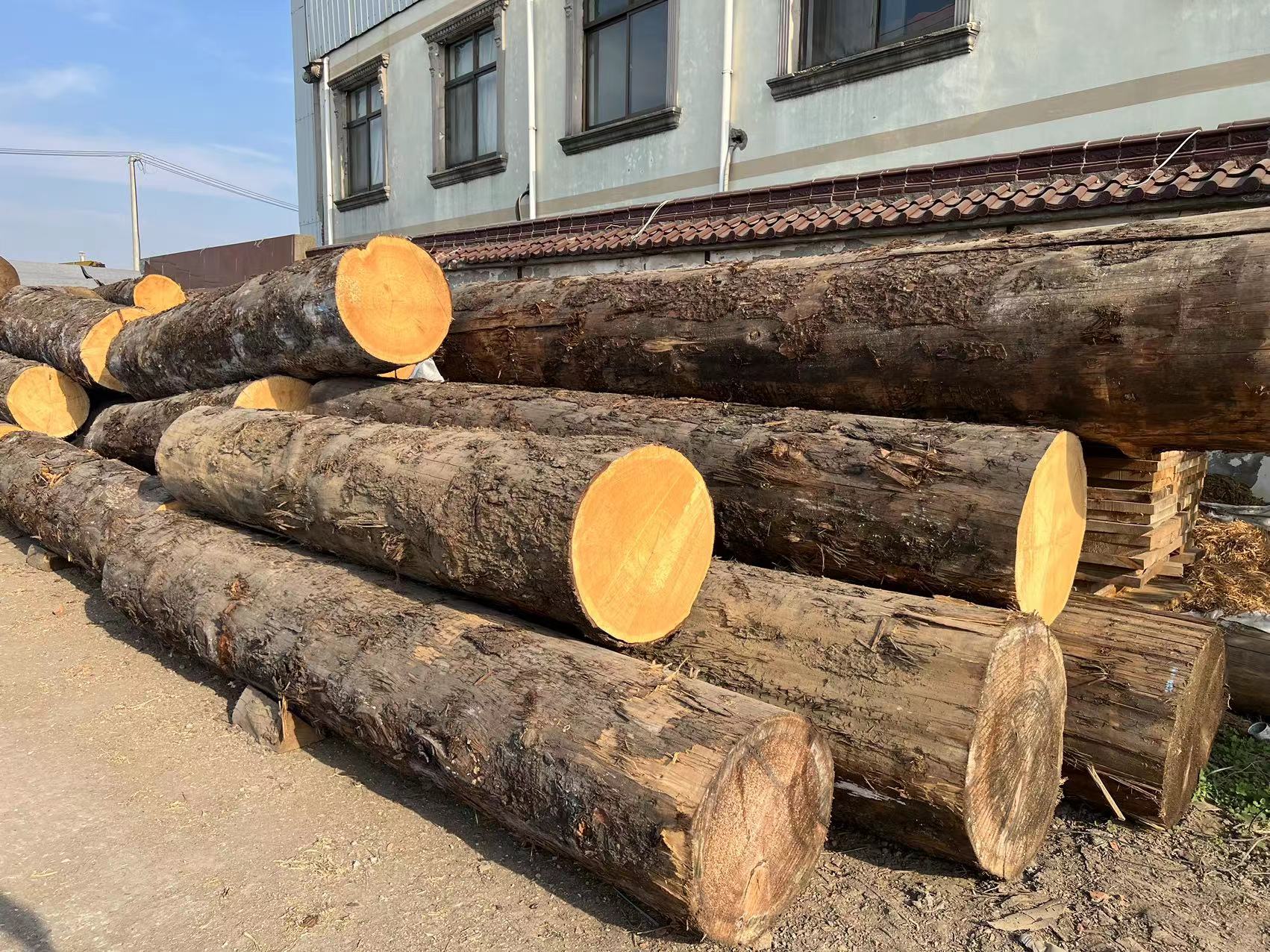
Logs
Drying process: The violin needs to undergo three drying processes.
The first time for mechanical drying, European logs are placed in the drying kiln for two weeks, reducing the moisture content to below 7%.
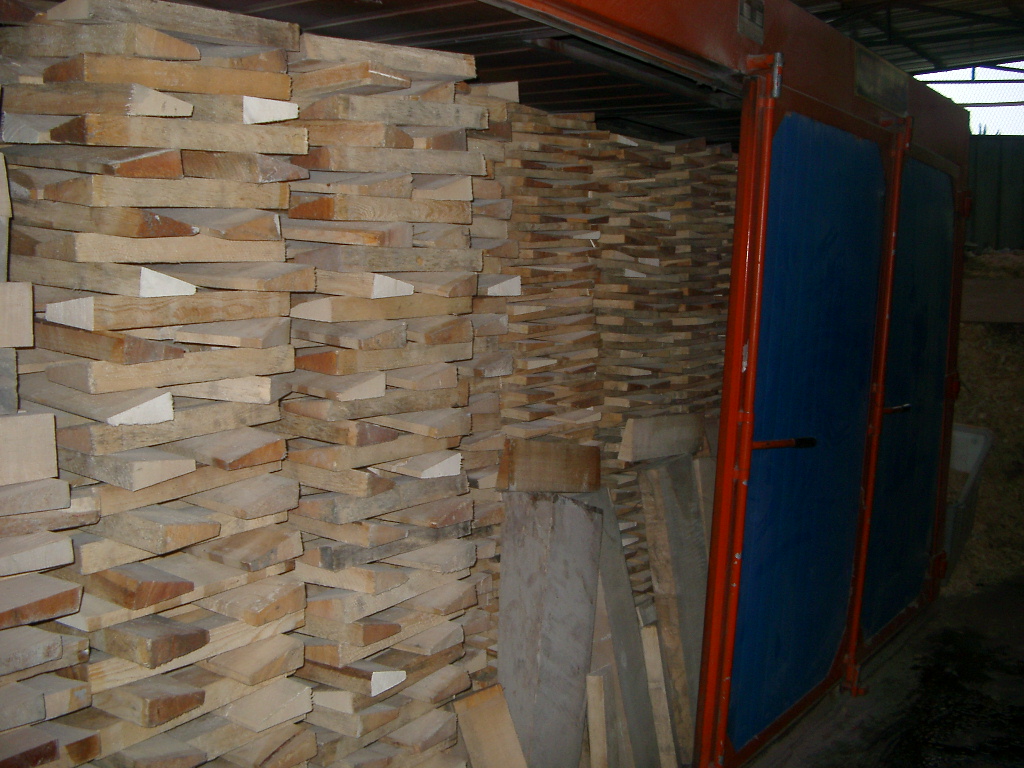
Mechanical drying
The second drying process: After drying, the raw wood is dried for another two years. Master-level violins must be dried for over five years to ensure the quality and tone of the violin. Nowadays, many brands boast about drying their wood for over ten years. Consumers need to be especially cautious of the deceptive advertising by unscrupulous businesses.
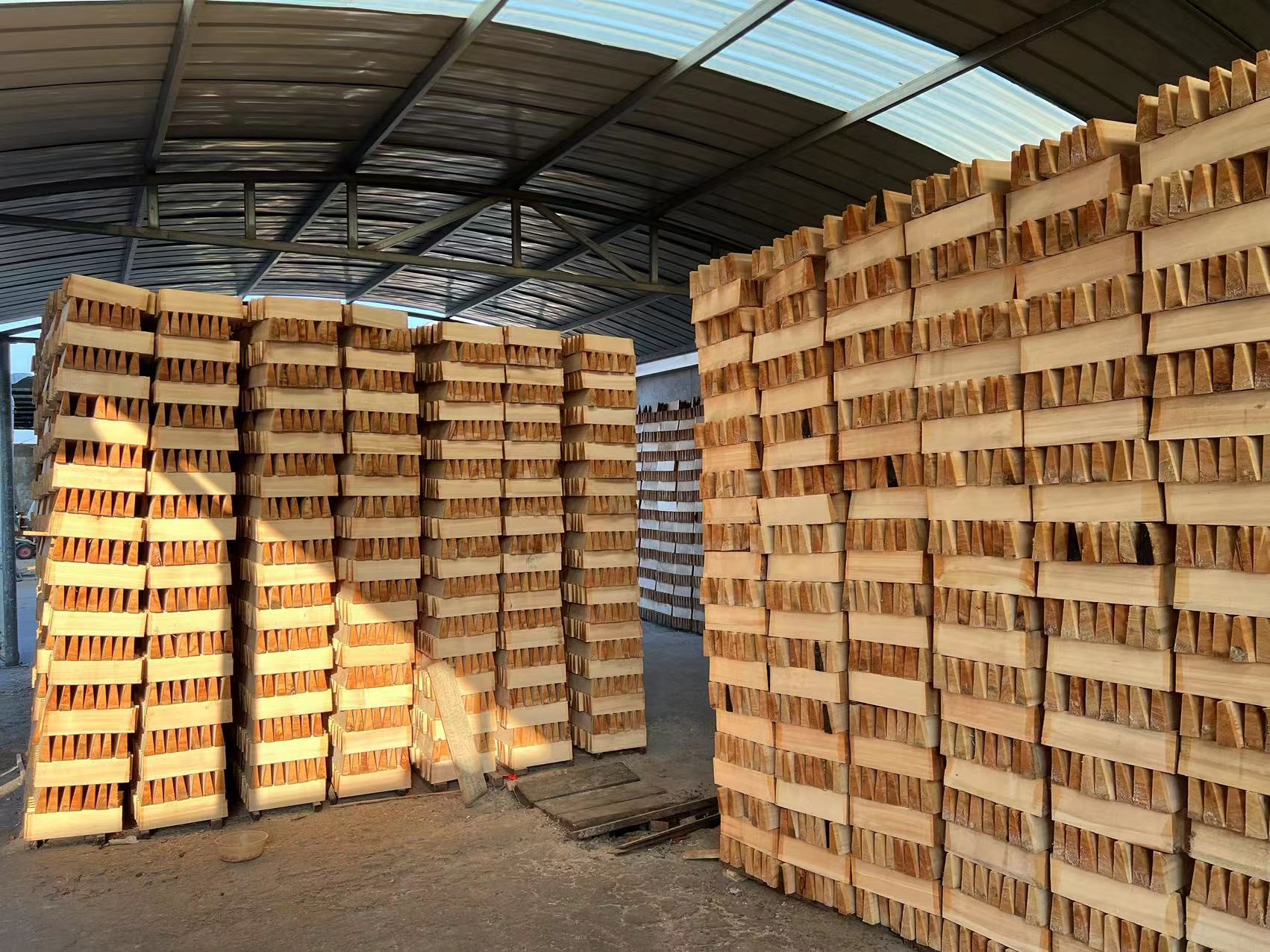
Naturally dried logs
The third step in health care: Before the luthier Franz Sandner begins making a violin, the wood must be placed in a health care room (temperature 40-45 degrees Celsius) to increase the flexibility of the wood. This results in a better sound quality for the produced violin.
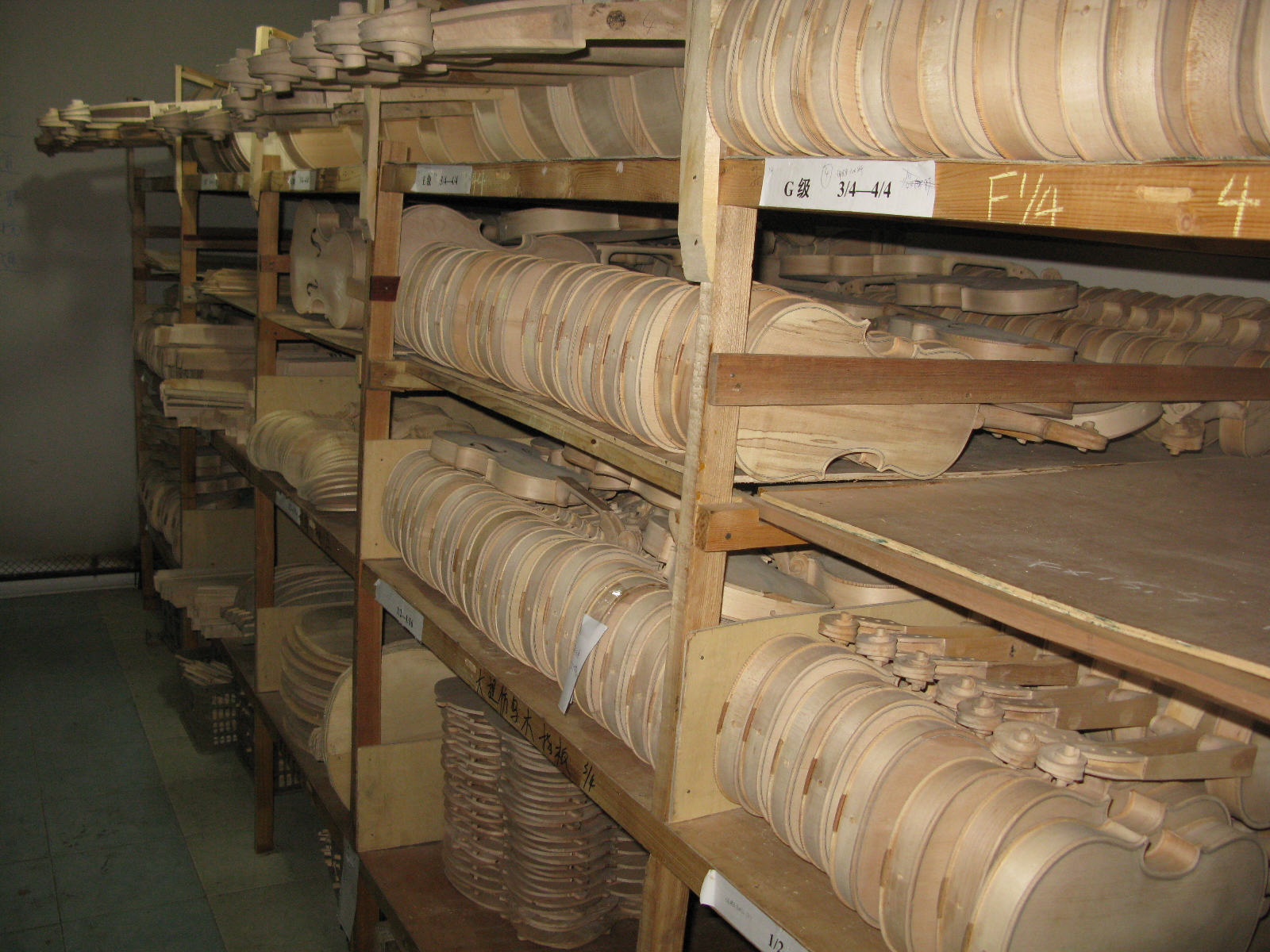
Optimization processing
The manufacturing process of a white body violin
Material selection: Different grades of materials are used to make different violins, and the combination of wood is very important. Therefore, an experienced master is needed to select the materials, and using a hammer to strike the wood is a testing method.
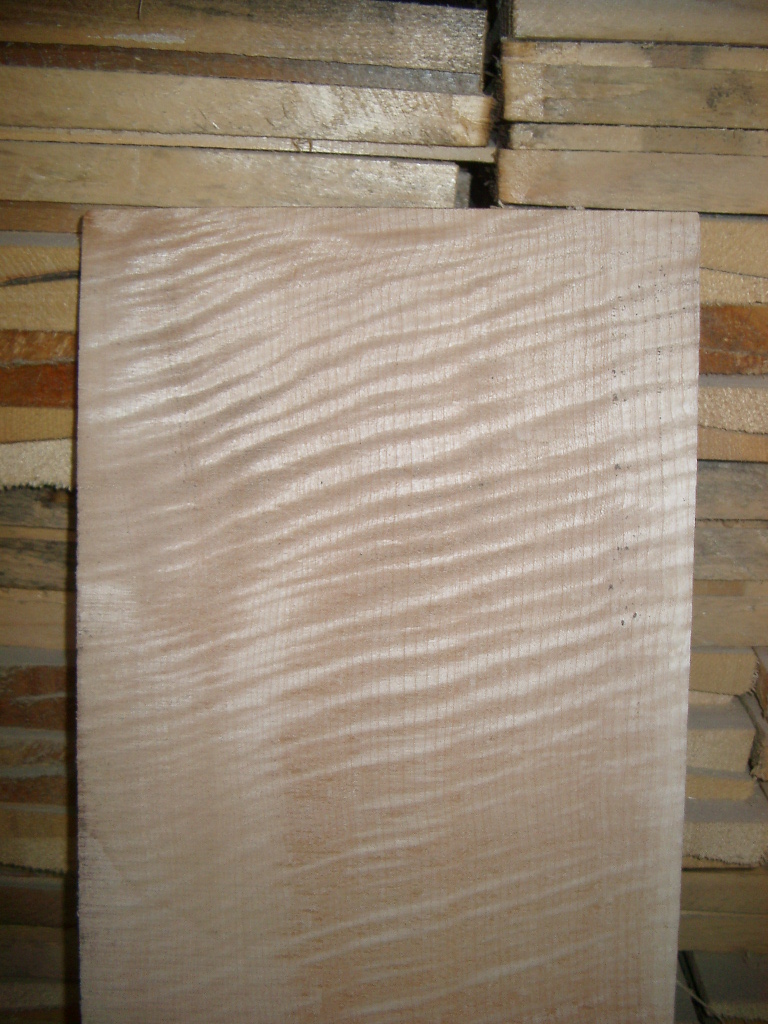
Selecting materials for making violins
Radian: The beauty of the radian will determine the quality of the sound of the entire violin. A good violin should be measured for thickness in at least eight different positions to ensure the quality of the sound.
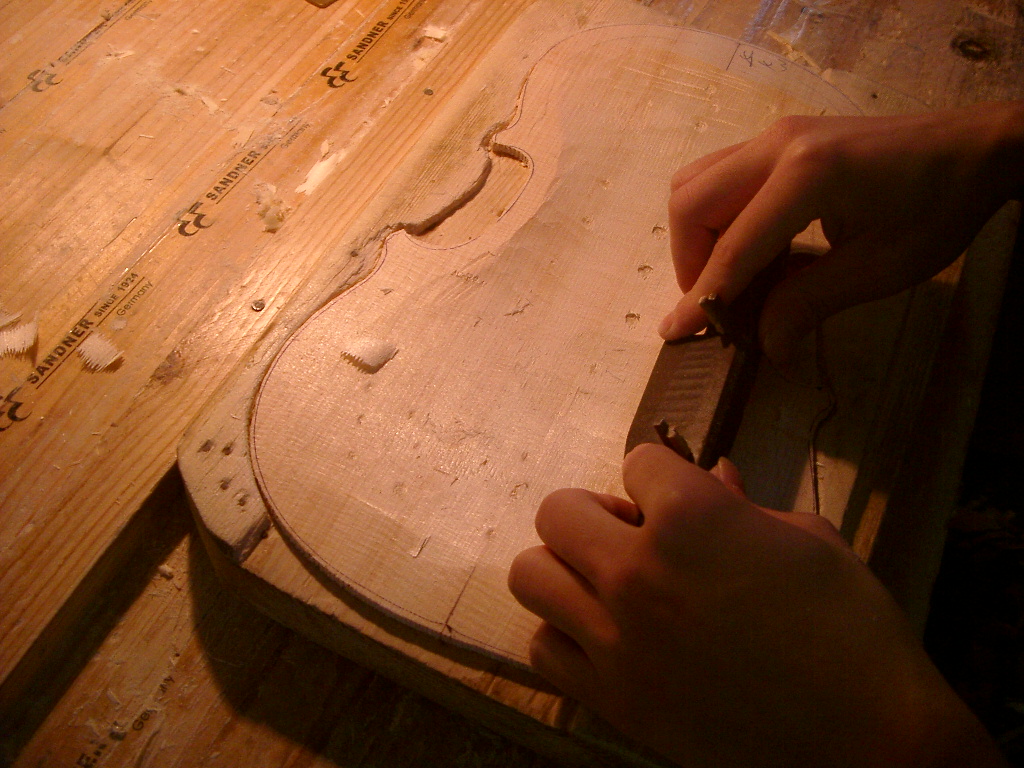
Bottom board, panel thickness production
Bass Bar: Made of Italian spruce, this is the most crucial material for producing the low tones of the violin.
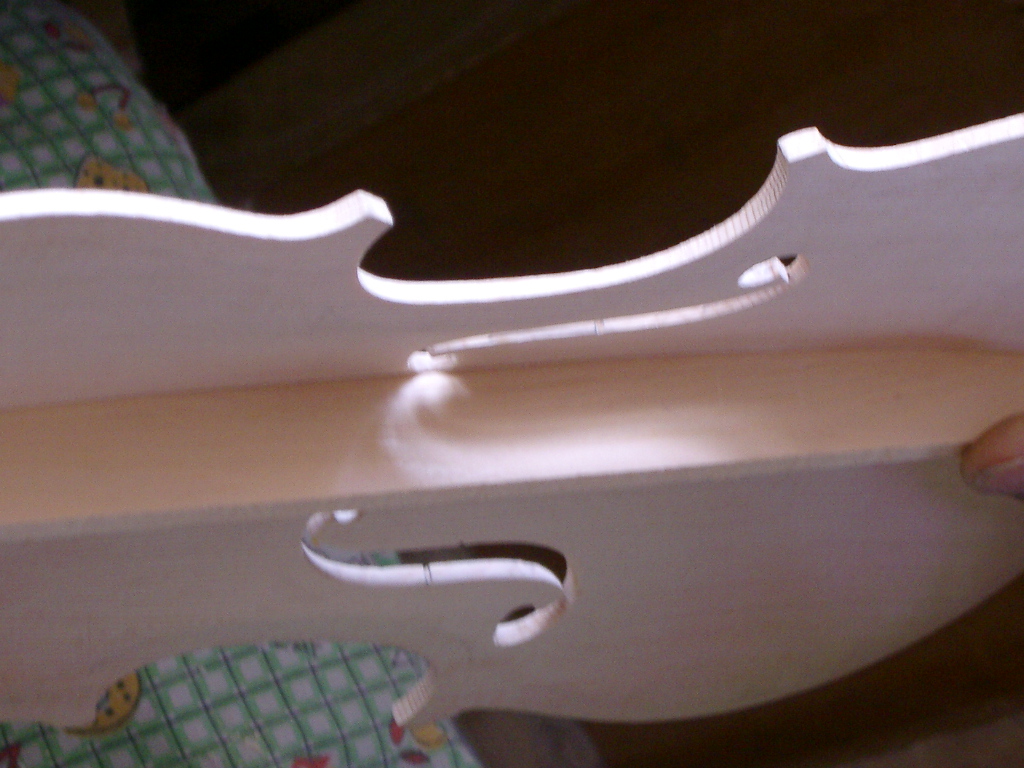
Bass Bar
Side panel and top corner wood: The side panel is made of maple wood, the top corner wood is made of spruce to fix the violin's shape.
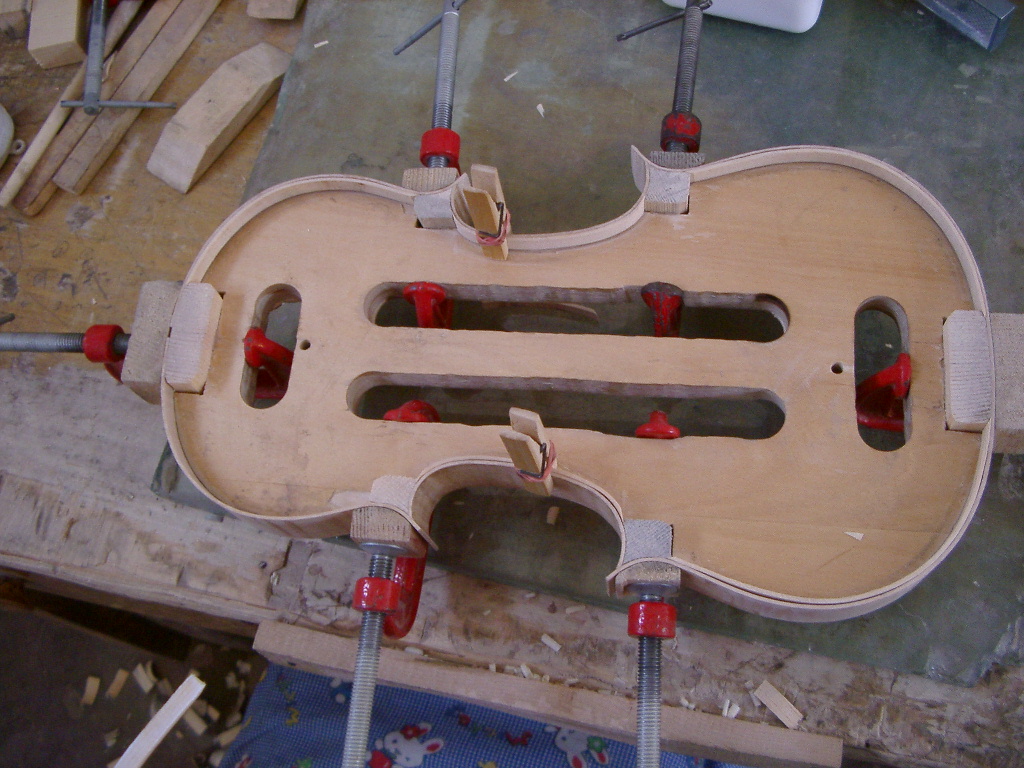
Side panels and top corners are fixed with wood.
Combining: Combining the back and side panels according to the design of STRADIVARI, the craftsmanship of Frans Sandner ensures the sound quality of the violin.
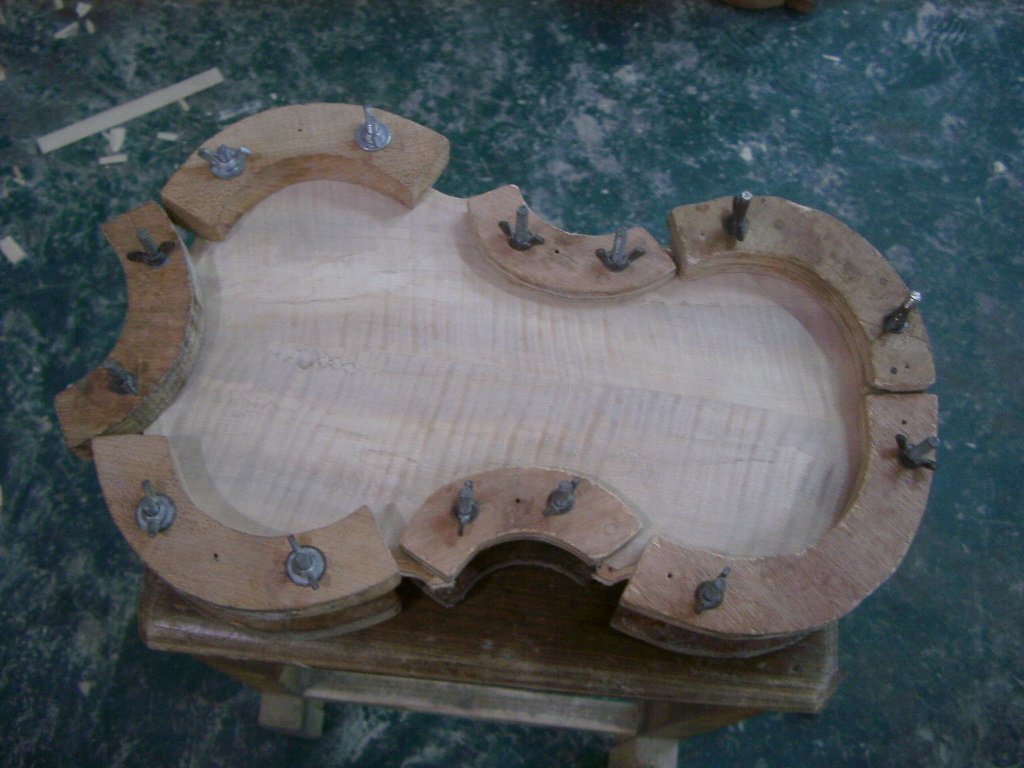
STRADIVARI Design - Combing
Purfling: Handcrafted inlay is used around the violin to prevent damage from collisions, and the violin's appearance is polished to be smoother.
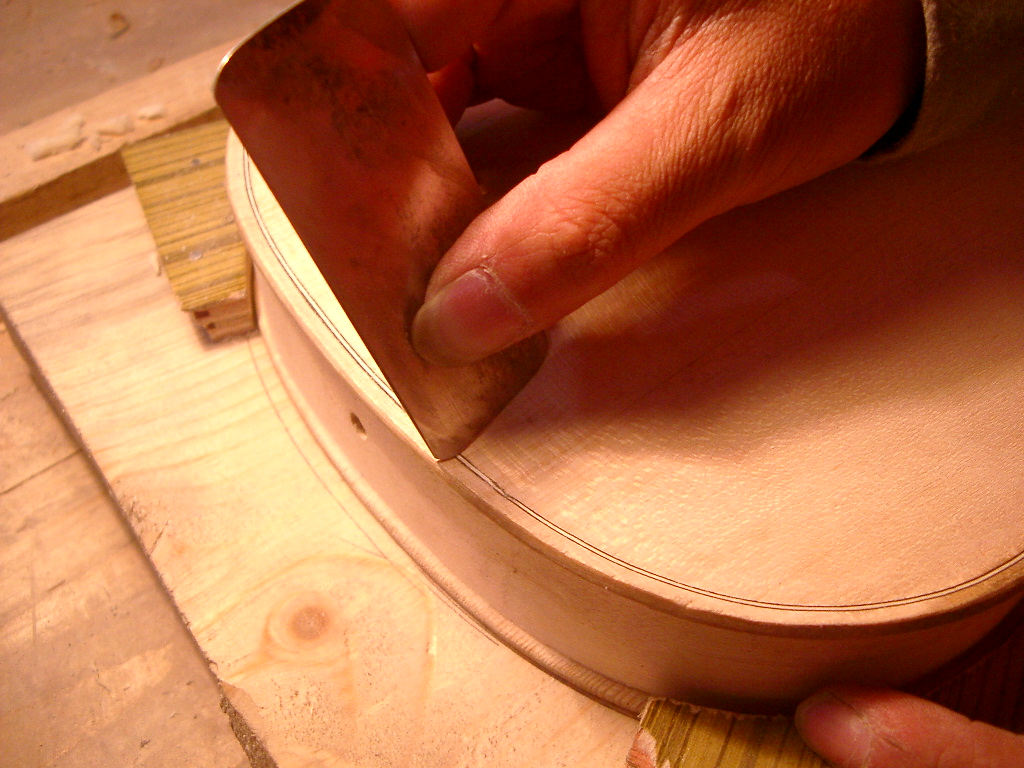
Purfling
Scroll Craftsmanship: The head of the violin is the most artistically valuable part of the entire instrument, and the quality of the carving directly affects the value of the violin.
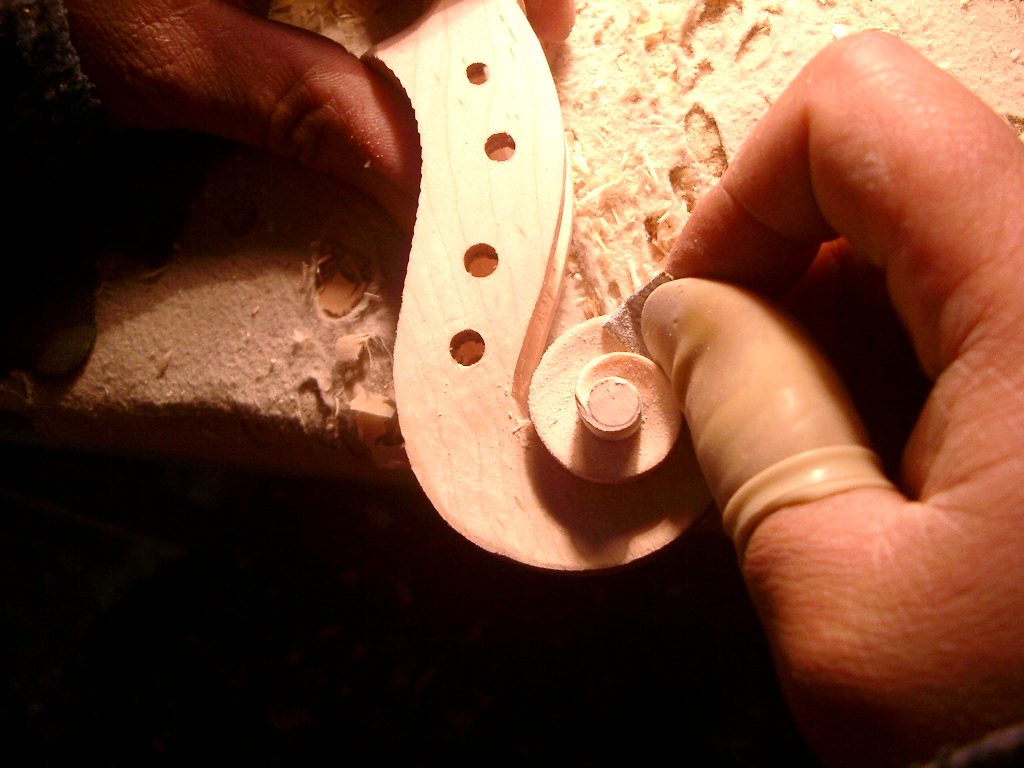
Carving and making the scroll of a violin
German century-old paint craftsmanship
Handmade Spirit Varnish: After undergoing thirty processes, it takes 25 days to produce this varnish. The paint produces a softer tone, but its drawback is that it is easily damaged in hot weather. High-end pianos all use handcrafted spirit varnish.
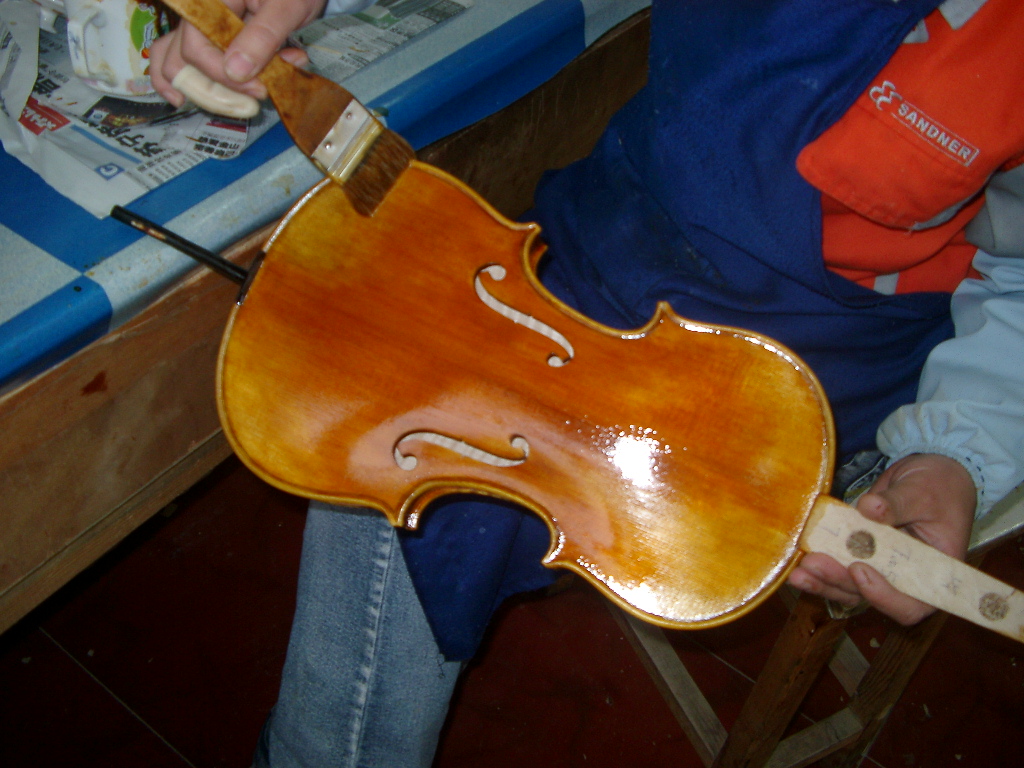
Handmade alcohol-based paint
General Handmade Lacquer: Chemical materials are handcrafted to produce a better hardness that is less prone to damage, but the sound quality is harder. It is commonly used by students in Flansham.
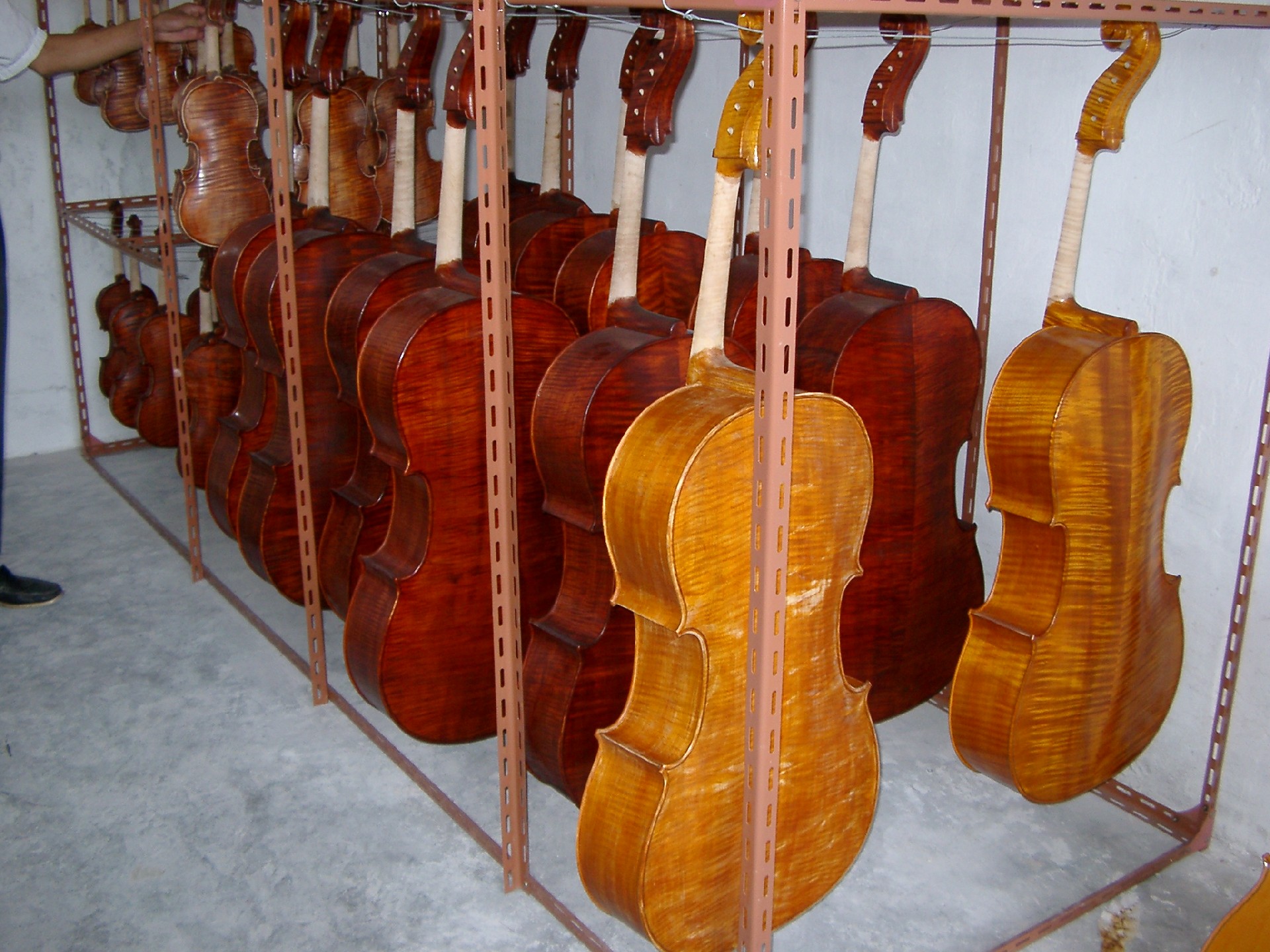
Assembly: One of the most important processes in violin making, the installation process includes:
Pegs: Each peg must fit tightly with the pegbox. The choice of material for the pegs is crucial. Wood with higher hardness will have less variation, making it less likely to have tuning issues in the future. Therefore, better pegs are usually made of ebony.
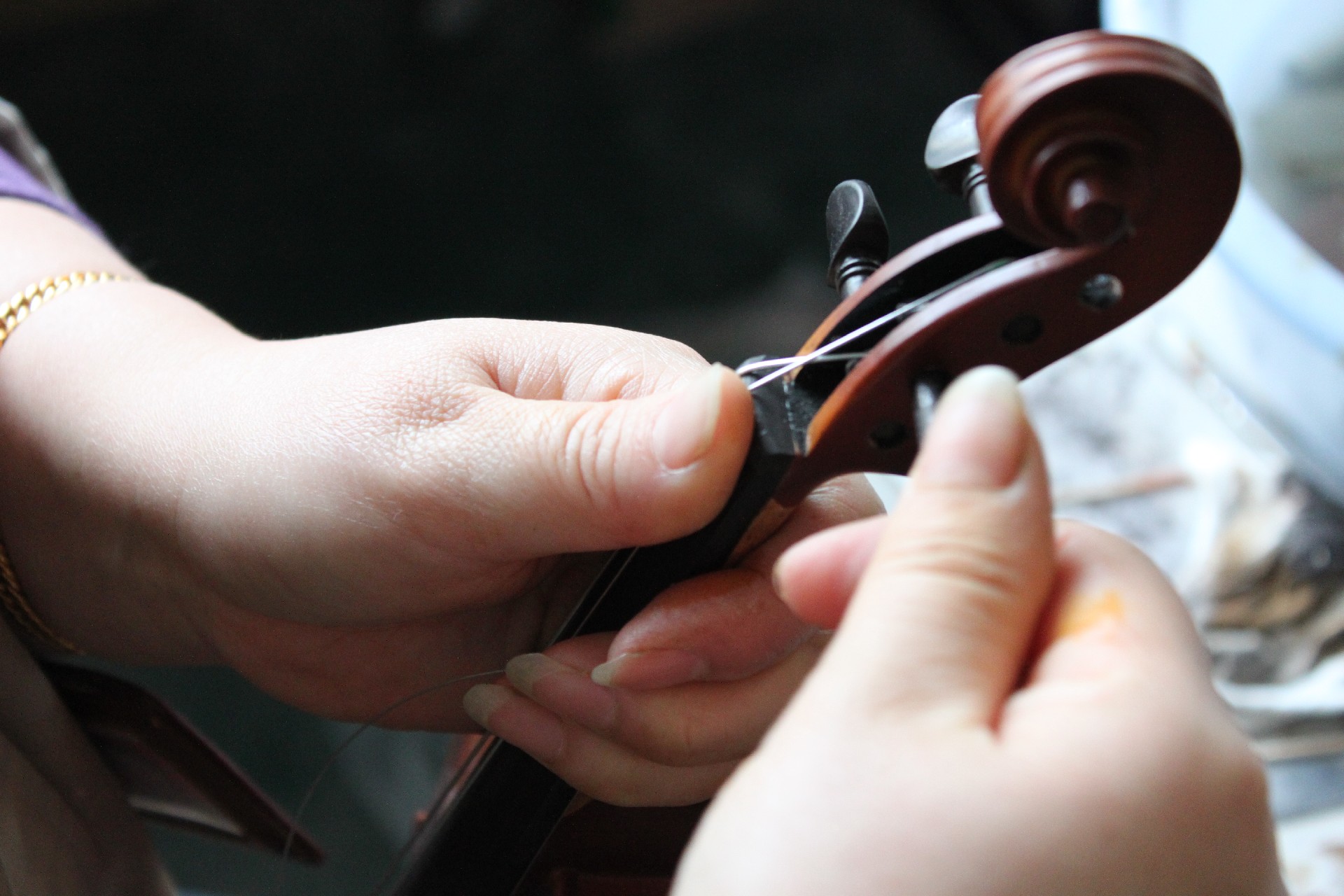
Installation of strings and tuning pegs
String Height: In order to provide users with the most comfortable feel, the string height of Franz Sandner violins must be accurately made. The distance from the E string to the fingerboard is 3mm, and the height of the G string is 5mm. (Standard for a 4/4 violin)
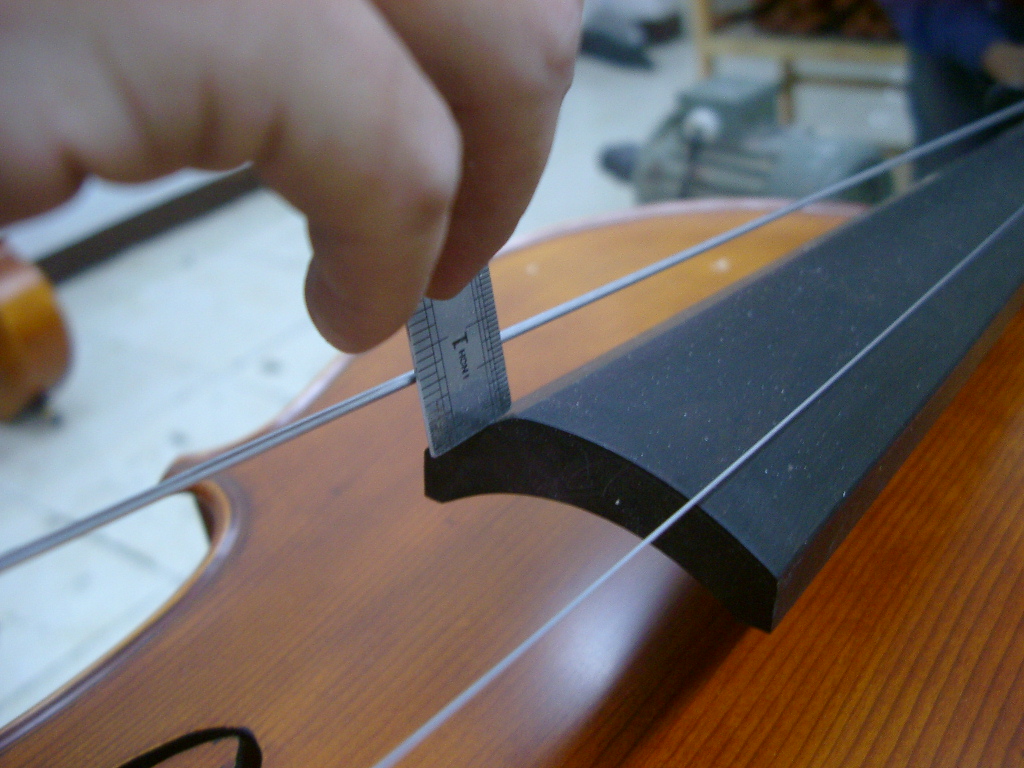
Check the height of the strings
Bridge Installation Technique: The bridge transmits the vibration of the strings to the body of the instrument. During installation, the bottom of the bridge should be completely flush against the violin, and the thickness of the feet should not exceed 2mm for optimal vibration transmission.
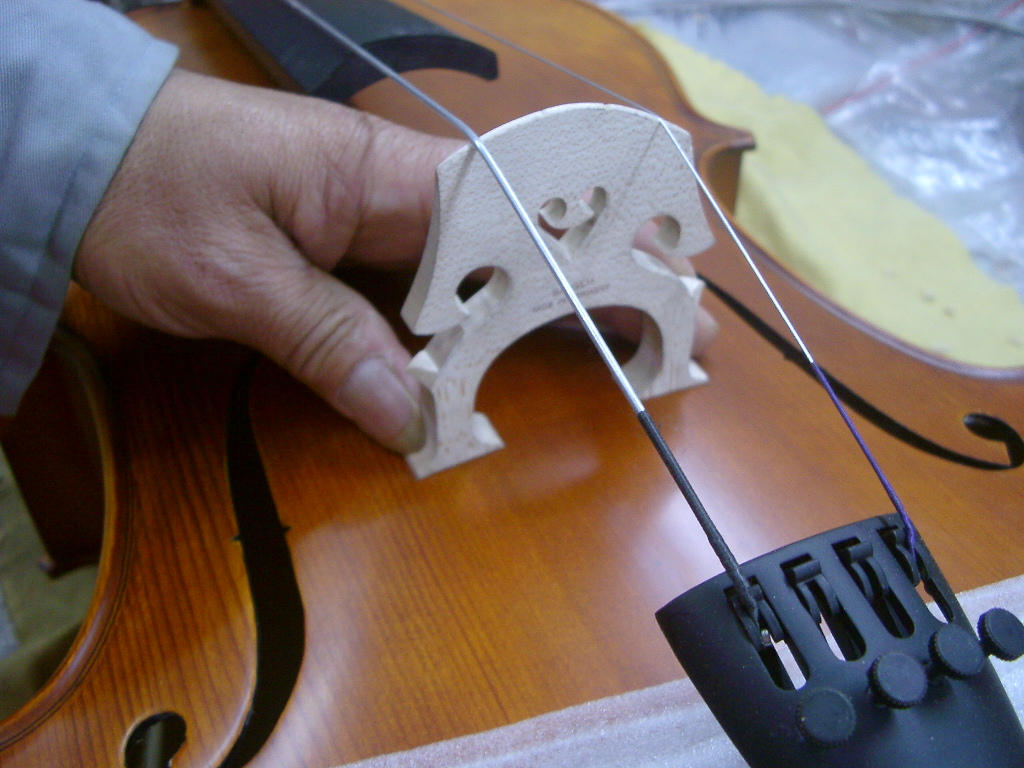
Installation of the bridge of a violin
We use German Teller bridges, with wood that has been dried for over five years, for better sound transmission and quality.
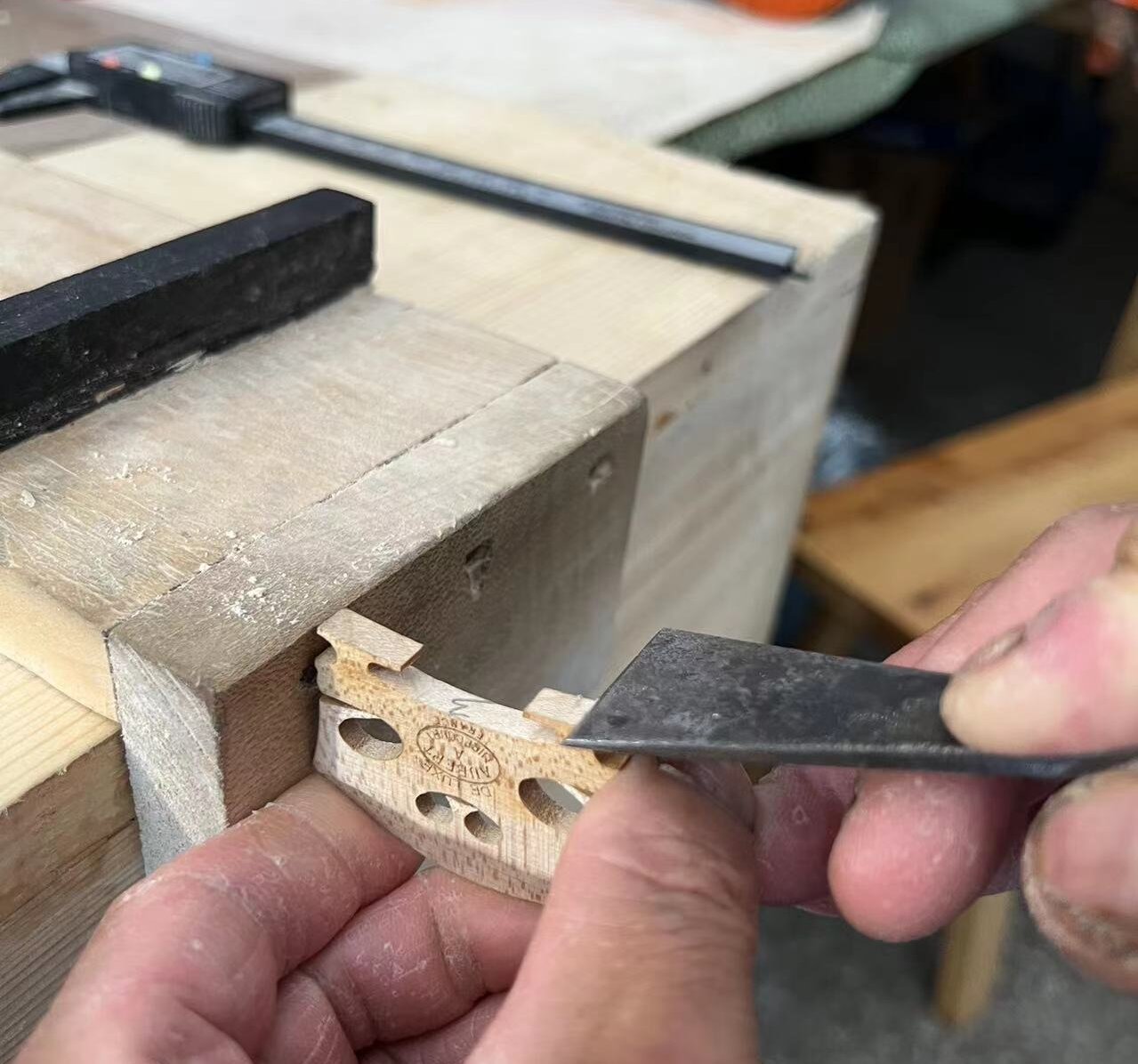
German Teller bridge
The soundpost is made of spruce wood, and it is the most important tool for transmitting the vibrations of the soundboard to the back plate. The position of the soundpost and the tightness of its contact with the back plate greatly affect the tone.
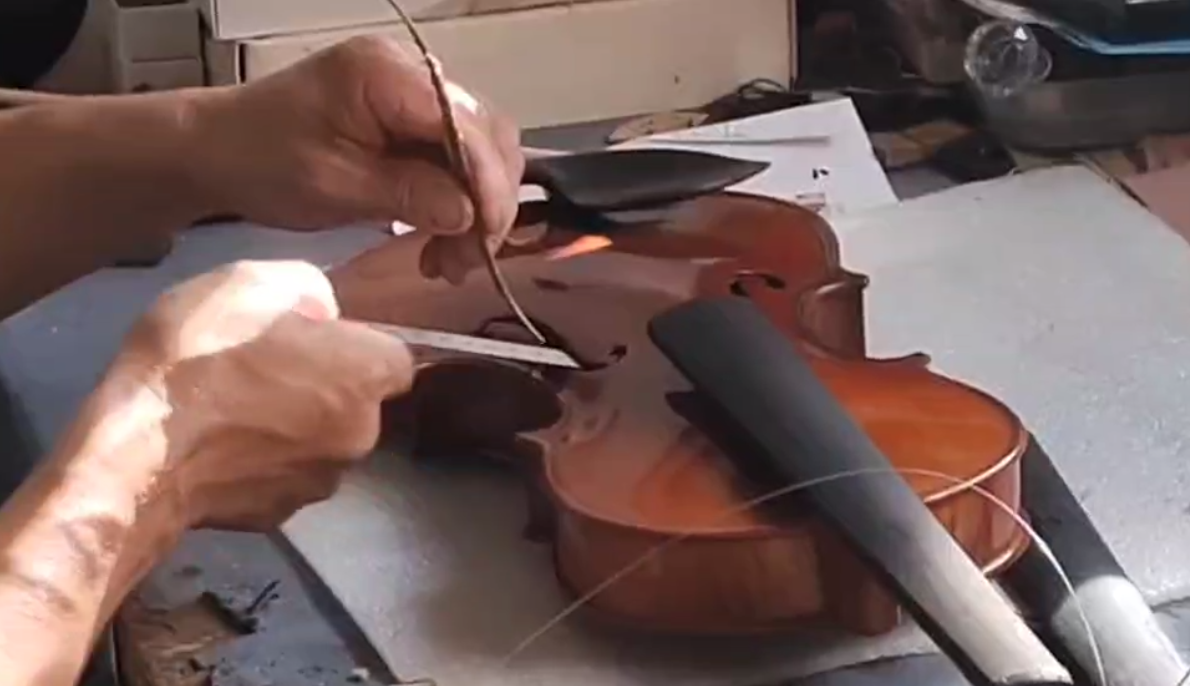
Installation of soundpost
Selection of Strings: When first learning the violin, it takes time to master the use of the bow and playing in tune. It is recommended to use steel strings initially. After 6-10 months of practice, you can play basic pieces. At this point, you can switch to nylon strings, which produce a smooth and bright tone. As your playing level improves, you can choose the type of strings you prefer.
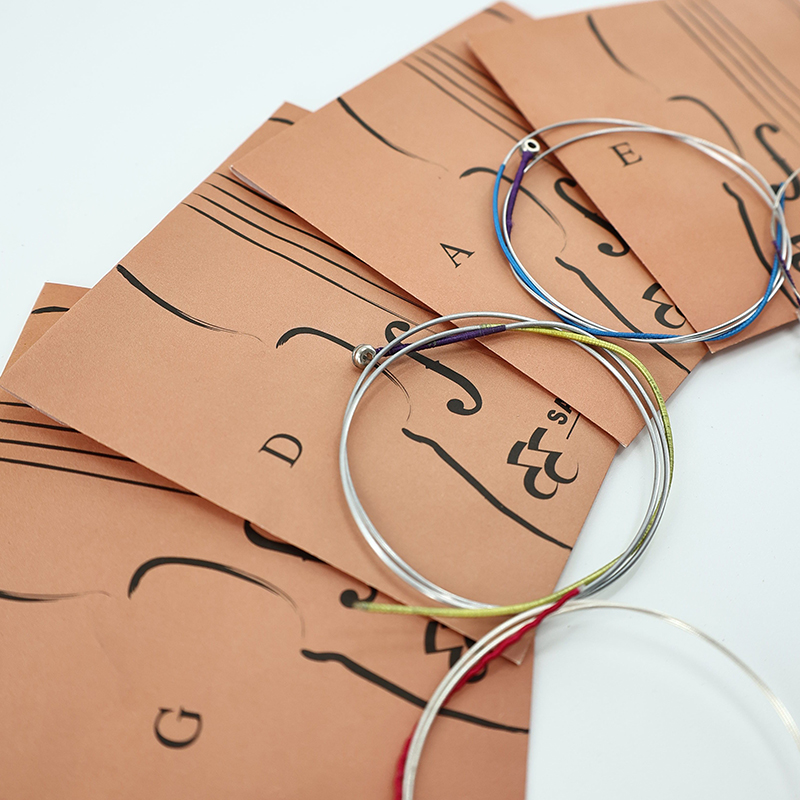
Franz Sandner Nylon String
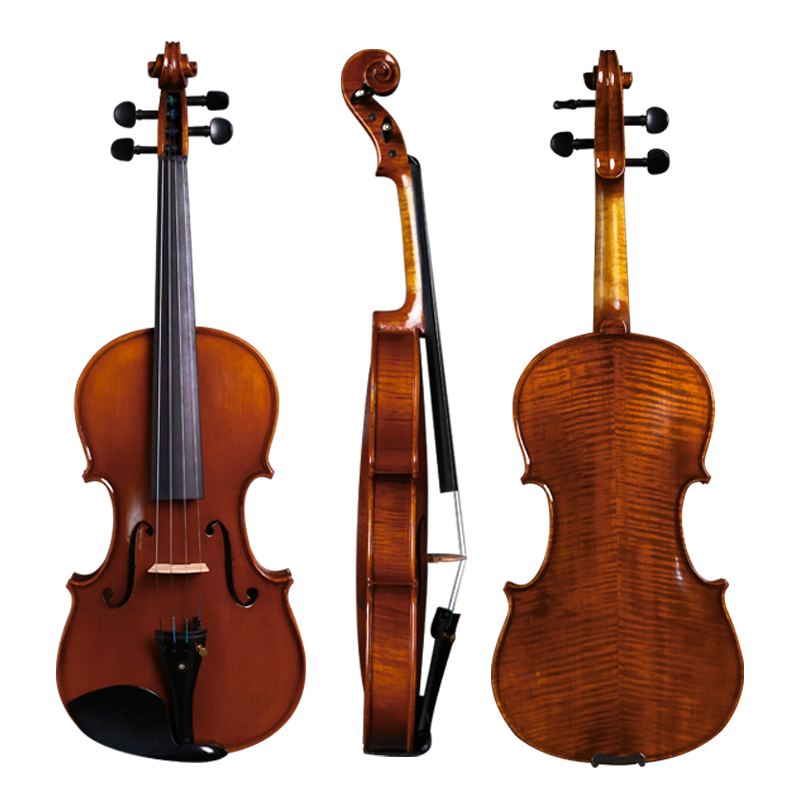
Franz Sandner violin
With hundreds of years of expertise as well as excellent pianists, we welcome you to the worldwide agency to experience great vocals from Germany – Franz Sandner